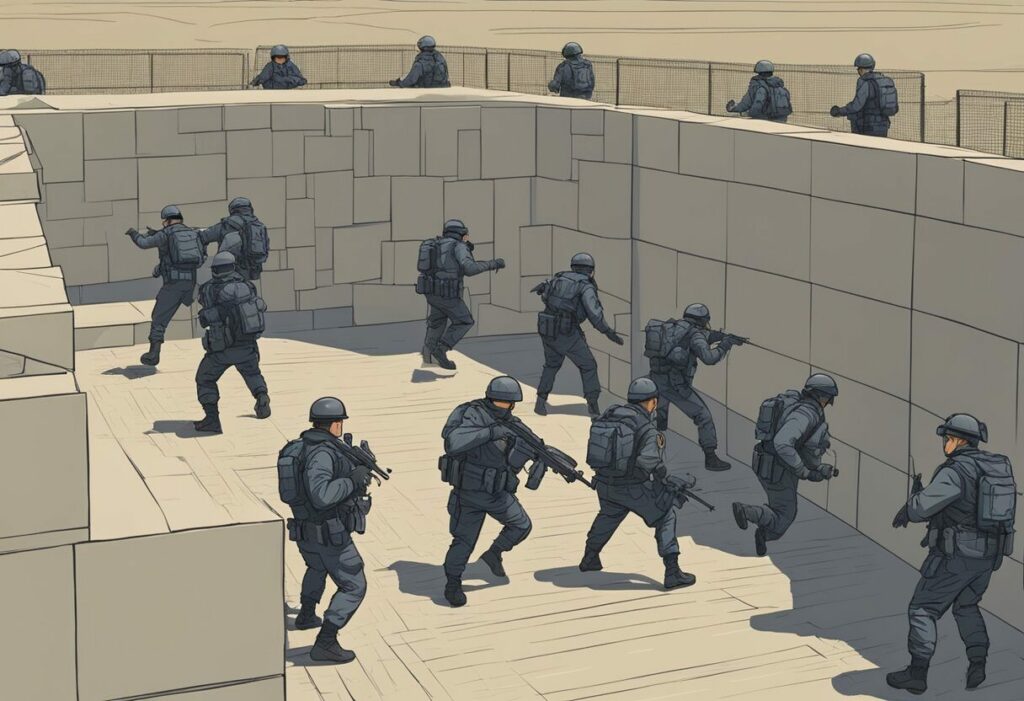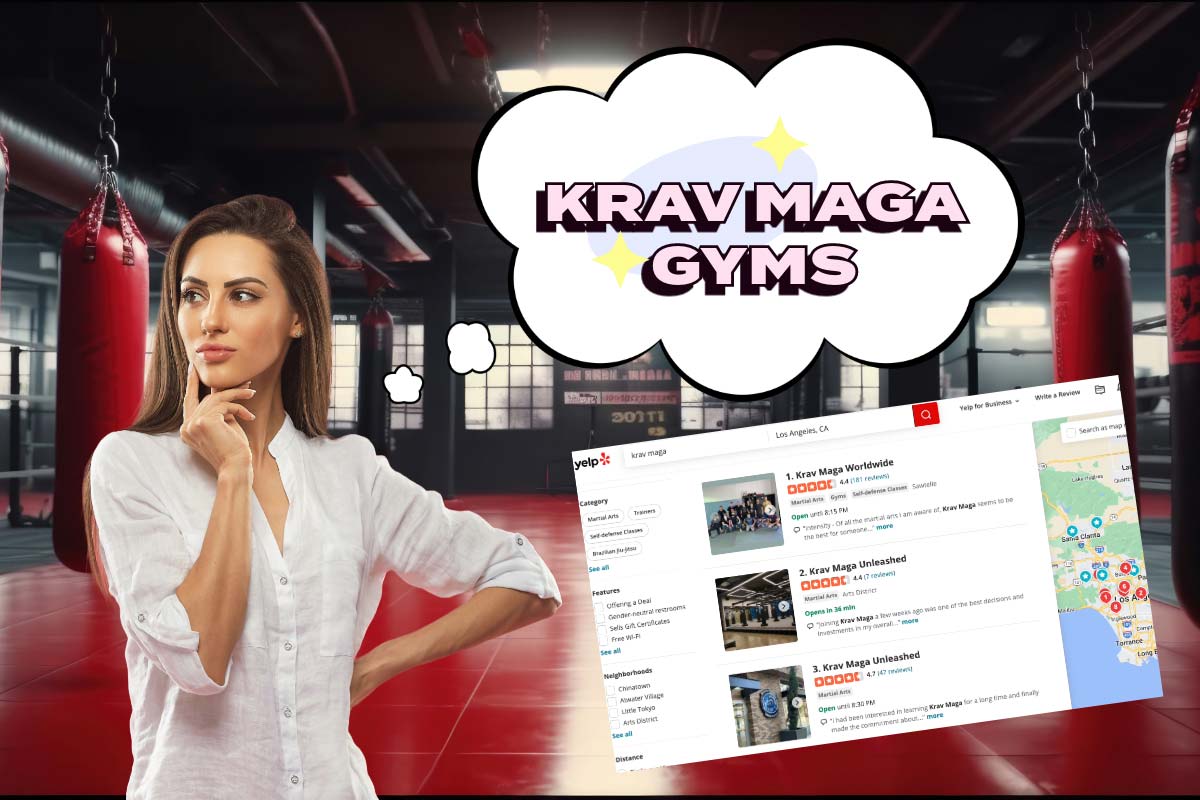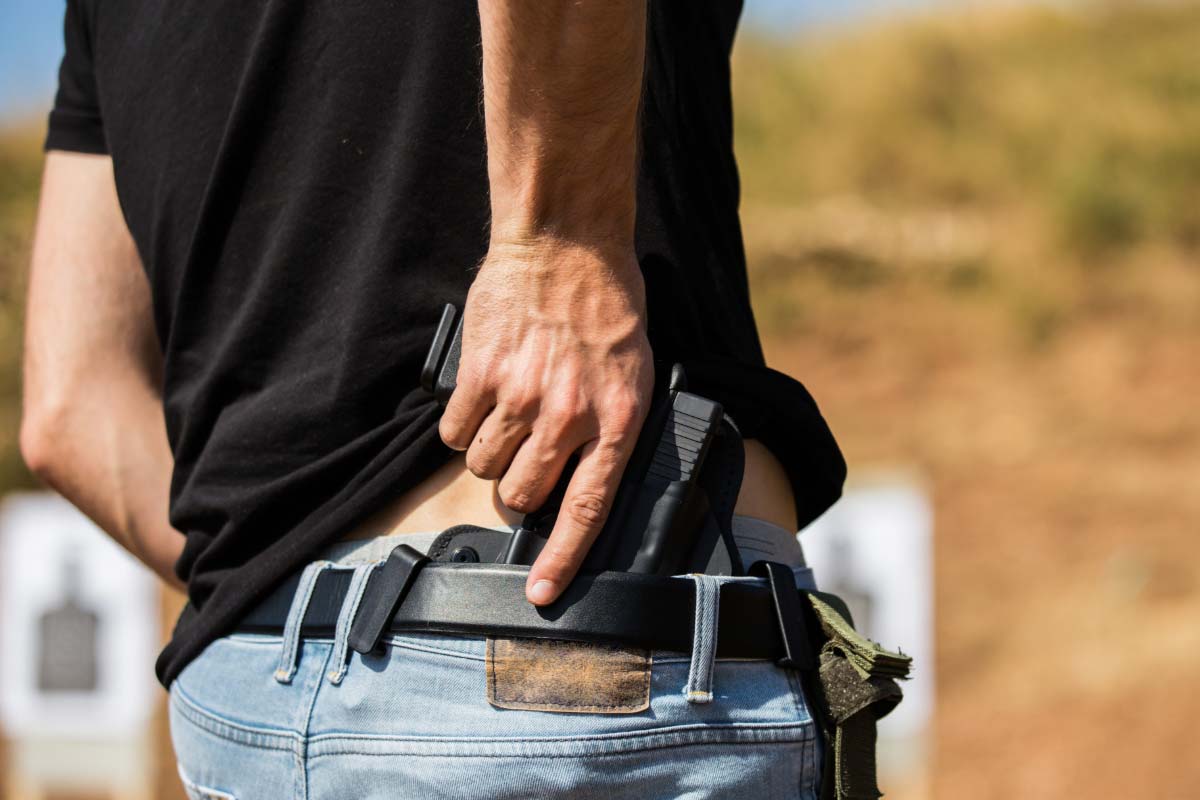Unsure of how to find the right school? Finding the right Krav Maga school requires careful consideration of various factors.
We’ll go over what to consider such as certification, instructor credentials, class structure and schedule, gym culture, and location and accessibility.
By taking the time to research schools and sign up for free trial lessons, you can find a school that aligns with your goals and values, and provides a safe and supportive environment for your training.
This article covers:
Identifying Your Self-defense Goals

Before choosing a Krav Maga school, it is important to identify your self-defense goals. This will help you find a school that aligns with your needs and expectations.
For example, your goals and needs may be:
- Get in fighting shape
- Improve my strength and cardio
- Train early in the mornings twice a week
- Learn how to throw a punch
- Train with a supportive community
- Earn a Krav Maga black belt
- Learn from experienced professionals
Here are some factors to consider:
Self-Defense Focus
After you’ve clarified your goals and expectations, find a gym that focuses on meeting these needs.
If your goal is to learn self-defense skills for personal protection, look for a school that puts a strong emphasis on practical techniques and realistic scenarios.
Ask about the curriculum and the instructors’ experience teaching self-defense.
The best instructors cross-train in multiple martial arts or self-defense disciplines. They’re excellent at conveying information and transferring knowledge.
However, working with an instructor that has expertise in one particular aspect of self-defense, such as with weapons, can also be beneficial if your goal is to develop mastery of a specific skill.
Consider whether the school offers classes specifically geared toward self-defense, or if it is more focused on competition and sport.
Also, check if the school has additional classes to help you develop striking and grappling skills. While learning some self-defense techniques is great, you should ideally supplement your training with some kickboxing and jiujitsu experience and sprinkle in some sparring if possible.
Sparring gives you more realistic fighting experience and helps you implement what you’re learning. This will give you a better understanding of distance and timing, as well as help condition you for a real fight. Learning how to manage your energy levels while you’re both attacking and defending is invaluable.
If you venture into sparring, you’ll want a school with a good community and a healthy culture that facilitates learning. Your partners should know how to go light in sparring, using control so that you can make progress in training without risk of injury.
For those that want to develop a self-defense skill set that is more ground fighting oriented, jiujitsu school may be more appropriate for you. While most Krav Maga curriculums include ground fighting skills, it is not a subject that is deeply explored.
Fitness and Conditioning
For those seeking to improve their fitness level, Krav Maga training is a great choice. Look for a school that incorporates fitness and conditioning into its classes. Ask about the level of intensity and whether the classes are suitable for your fitness level.
Almost all Krav Maga classes will include some fitness and conditioning activities in their warm up exercises.
Schools that have sparring sessions, such as Muay thai and jiujitsu gyms, will usually include cardio as well as strength and conditioning programs into their classes too. This is critical for getting in fighting shape and being able to perform training activities properly without getting winded too easily.
Professional Training for Law Enforcement or Military

Krav Maga was originally developed for the Israeli military and has since been adopted by law enforcement agencies around the world.
If you are a law enforcement officer or military personnel seeking professional training, look for a school that offers specialized classes for your needs.
Ask about the instructors’ experience working with law enforcement or military personnel and whether the school has a track record of success in training professionals. Krav Maga Worldwide (KMW) has a force training division. See if the school you’re interested in offers something similar.
Gracie University in Torrance, California offers tactics courses for law enforcement. This academy is world renowned for its elite level Brazilian Jiujitsu instructors and deep roots with Gracie Jiujitsu lineage.
Gracie Survival Tactics (GST) is a revolutionary defensive tactics system based on Gracie Jiu-Jitsu that incorporates time-tested techniques into an easy-to-learn system designed to help officers verbally and physically de-escalate while humanely prevailing resistant and/or aggressive subjects.
Source: Gracie University
Choosing the Right Krav Maga School
Here are some things to look for right away when choosing the right Krav Maga school to ensure you’ll receive quality training and that classes will be accessible to you:
Certification and Affiliations
Choosing a Krav Maga school that is certified by a reputable organization is important, although not completely necessary.
Some of the best instructors have plenty of experience with deep knowledge of fighting and are not necessarily ranked or certified.
Krav Maga Worldwide (KMW) is reputable organization that certifies schools and instructors. You can be sure that instructors certified from KMW are held to high standards and have undergone rigorous testing to become qualified instructors. Their teaching methods and philosophy are best-in-class.
It is also important to consider the school’s affiliations with other organizations in the Krav Maga community. Unfortunately, there are some questionable Krav Maga schools out there. Check if your school is a legit Krav Maga gym, or if it simply offers some Krav Maga training.
Instructor Credentials
Instructors should have extensive training and experience in Krav Maga. It is important to look for instructors who are certified and have experience teaching Krav Maga. Additionally, instructors should be able to provide credentials and references upon request.
However, as mentioned previously, credentials on paper aren’t everything. We recommend taking some trial classes or at least watching a class. This should help you get a feel of the instructor and if the class setting feels appropriate.
Class Structure and Schedule
The structure of the classes and the schedule should fit your needs and goals. Look for a school that offers classes at times that are convenient for you. Additionally, consider the structure of the classes, including the curriculum and the level of intensity.
Most classes are an hour long. The first 10-20 minutes of class is usually dedicated to warm up drills and stretching. The remainder of class is spent learning new techniques and practicing partner drills to internalize the information.
If you work a typical 9-5 job, you may want to find gym that offers early morning and night class options. Smaller mom-and-pop gyms may offer a limited schedule with few class options. If you need more flexibility, you may be better suited with a large gym that has a packed schedule offering classes all day throughout the week.
Location and Accessibility
The location of the school should be convenient and accessible. Look for a school that is located in a safe and easily accessible area. Additionally, consider the parking and transportation options available.
As with most types of training and learning new skills, consistency is key. Find a gym that is close enough or that is conveniently located so that you stay motivated to go to class. You want to develop the habit of training often.
Skipping one class every once in a while is fine, but when you start to skip two or three classes, that’s typically when your training starts to fall off.
Evaluating Training Programs
When searching for a Krav Maga school, you should be evaluate the training program to ensure the classes meet your needs and goals.
Here are some factors to consider when evaluating training programs:
Curriculum and Progression
A good Krav Maga school should have a clear and well-structured curriculum that covers all aspects of self-defense training.
The curriculum should include techniques for striking and grappling as well as self-defense concepts and soft skills like situational awareness and deescalation techniques.
It should also cover defenses against common attacks such as chokes, grabs, and strikes.
Additionally, the school should have a clear progression system that allows students to advance through the ranks. This system should be transparent and based on a standardized testing system.
Specialized Classes
Some Krav Maga schools offer specialized classes that focus on specific areas such as weapons defense, ground fighting, or sparring. These classes can be beneficial for students who want to focus on a particular area of self-defense training.
When evaluating a Krav Maga school, it is important to consider whether they offer specialized classes and how often they are offered.
Youth Programs
Krav Maga is not just for adults. Many schools offer youth programs that cater to children and teenagers. These programs should be age-appropriate and focus on developing skills such as self-discipline, self-confidence, and self-defense.
When evaluating a Krav Maga school, it is important to consider whether they offer youth programs and how they are structured.
Class Sizes
Smaller martial arts class sizes offer more personalized attention from instructors, tailored pacing, and increased opportunities for practice.
This enhances the learning experience and leads to faster progress.
The intimate setting fosters a supportive community and ensures closer safety monitoring, making it an ideal environment for students to develop their skills and confidence in the discipline.
Additional Considerations
Once you’ve narrowed down some Krav Maga schools you’re interested in, be on the lookout for these factors:
Community and Culture
The community and culture of a Krav Maga school can greatly impact your experience and progress. It is important to find a school that aligns with your values and goals.
Look for a school that fosters a supportive and inclusive environment, and where the instructors and students respect each other.
You can ask for recommendations from friends or search for reviews online to get an idea of the school’s community and culture.
You want to avoid gyms where students or instructors have inflated egos, are overly competitive and feel the need to win all the time.
Trial Lessons and Costs
Before committing to a Krav Maga school, it is recommended to take advantage of trial lessons or free classes.
This will give you an opportunity to experience the training and see if it is a good fit for you.
Most schools will offer one free trial class or day pass. However, some schools like 360 Self Defense Academy, in Los Angeles, offer a very generous two week free trial.
Additionally, it is important to consider the costs of the school. Some schools may require a long-term commitment or have hidden fees, so it is important to understand the pricing structure before signing up.
Most gyms offer a one-time drop in fee if you’ve already used up your free trial. This is typically more expensive as you pay on a per class or per day basis. There’s usually cheaper options available such buying a multi-class pack or short-term commitment like 3-month, 6-month, or 1-year in advance.
Ask the gym for their rates and other pricing options.
Safety and Equipment
Krav Maga is a contact sport, so safety should be a top priority. Look for a school that emphasizes safety and provides proper equipment, such as gloves, shin guards, and mouthguards.
If the school does not provide this equipment, ask for what gear you are expected to have and for some recommendations.
Additionally, the school should have a clean and well-maintained facility to prevent injuries and ensure a safe training environment. Avoid schools that don’t facilitate a culture of cleanliness. Be on the lookout for stinky locker rooms and bathrooms, dirty floors and holes in the mats.
Are you currently looking for a Krav Maga gym to train at? Leave a comment below.







